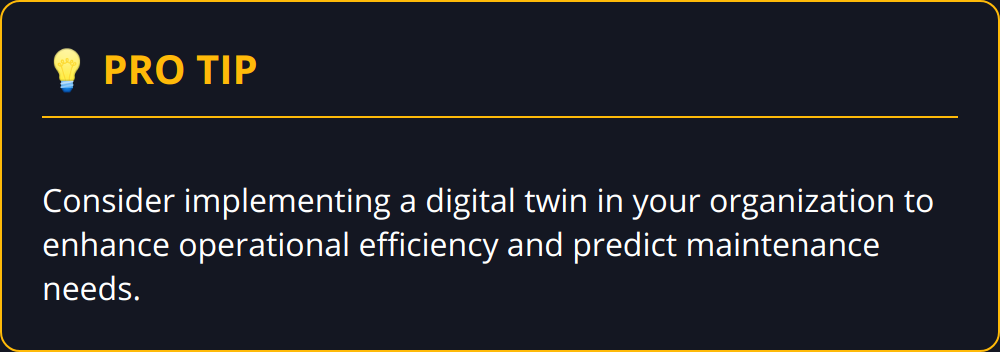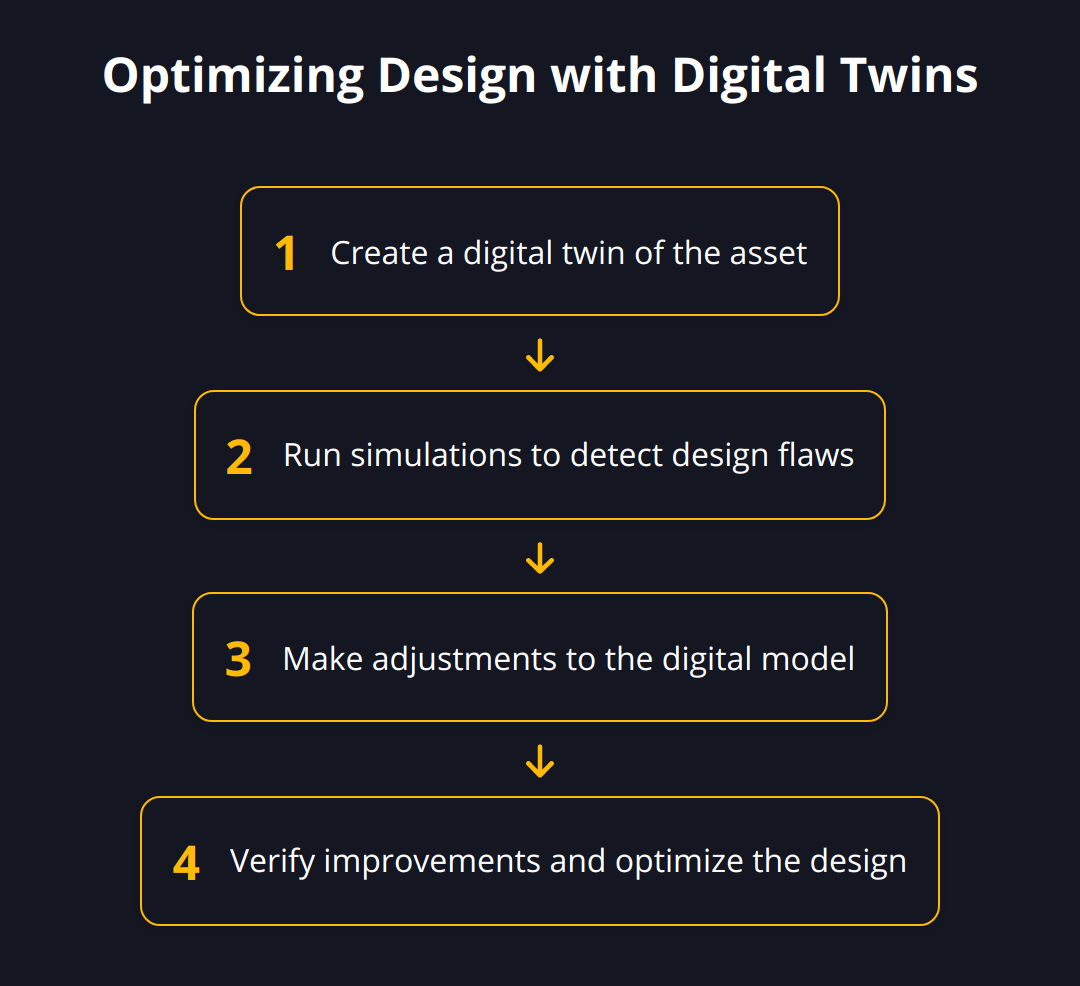We at newroom connect understand that the digital world is constantly evolving, with innovative technologies reshaping industries. One such transformative concept is the digital twin, a powerful tool that mirrors physical assets in the digital realm to boost efficiency and streamline operations.
In this beginner’s guide, we’ll break down the fundamentals of digital twin technology and its components, explore how it’s revolutionizing efficiency across various sectors, and provide concrete examples of its impact. By the end, you’ll see why the adoption of digital twins could be a game-changer for businesses looking to enhance their performance and drive future growth.
What Is a Digital Twin?
The term ‘digital twin’ refers to a detailed digital representation of a physical asset, system, or process. Think of it as a bridge between the physical and digital worlds, leveraging data and models to simulate reality with astonishing accuracy. How do they function? By harnessing real-world data captured by sensors and other sources to replicate the behavior and performance characteristics of their physical counterparts. Here’s what businesses must know about digital twin technology:
Digital twins and their workings are not just a nifty idea for the future; they’re a tangible asset businesses are leveraging today. By mirroring every aspect of a physical object or process within a digital environment, companies can run simulations, predict outcomes, optimize operations, and ultimately improve efficiency. These representations are not static; they are dynamic, continually updated with real-world data, enabling them to evolve alongside the physical entity they mirror.

Key components shaping digital twins: First, you have IoT sensors and devices that collect real-time data from the physical asset. Next are the data processing frameworks where this information is analyzed. Cloud platforms play an essential role, offering the scalable computing resources necessary to handle the vast amounts of data involved. Then, there are analytics and simulation tools that chew through data to provide insights and predictive outcomes. Lastly, the user interface visualizes these findings in an understandable and actionable way.

Practical examples solidify the value of digital twins. For instance, in manufacturing, companies like Siemens have successfully reduced machine setup times by as much as 50% by employing digital twins, directly translating into operational efficiency and considerable cost savings. In agriculture, using data from satellite images and on-site sensors, digital twins facilitate resource optimization, demonstrating not just operational but also sustainability gains.
For those venturing into the digital twin landscape, the amplifying impact on business outcomes cannot be overstated. Their capability to anticipate issues before they occur, test out scenarios without physical risks, and give insightful feedback for decision-making is invaluable. Moreover, rapid advancements in IoT and cloud computing make digital twins not just accessible but a formidable tool for driving business success.
Interested in digging deeper into what makes digital twins an asset in modern manufacturing? Our article on why industrial digital twins are vital provides a comprehensive look. And for those ready to implement this technology, guidance from our digital twin implementation post can be pivotal.
Here’s a snapshot of key takeaways about digital twin technology:
-
Harness real-world data for dynamic simulation and predictive analytics
-
Crucial for improving operational efficiency, with proven potential to halve machine setup times
-
Cloud computing and IoT are major enablers of practical, scalable digital twin solutions
-
Widespread applications from manufacturing to smart agriculture reflect versatility and value
-
Adoption is skyrocketing; don’t get left behind in capitalizing on this transformative innovation
With these insights, businesses can forge ahead, fully recognizing the potential of digital twins to streamline operations, enhance productivity, and underpin sustainable growth strategies.
Enhancing Operations with Digital Twins
Digital twins are more than a technological trend; they are an operational powerhouse for real-time monitoring and predictive maintenance. In sectors where downtime equates to lost revenue, the ability to predict and prevent equipment failures before they happen is invaluable. By constantly feeding digital twins with data from connected IoT devices, we can detect anomalies and predict wear and tear. This not only prevents costly downtime but also extends the lifespan of equipment.

Take, for instance, the energy sector, where predictive maintenance can lead to a reduction in unplanned outages by up to 30%, as outlined in our digital twin development explained article. The efficiency gains here are undeniable, streamlining operations and cutting maintenance costs.
When it comes to simulation and scenario analysis, digital twins stand out. They enable businesses to test various scenarios and make data-informed decisions without risking their actual assets. For instance, a logistics company might use a digital twin to simulate the impact of a new supply chain process, safeguarding against potential inefficiencies. The ability to analyze countless scenarios leads to a leaner, more efficient operation.

Design and production processes also reap the benefits of digital twins. By creating a digital replica, companies can refine designs and troubleshoot issues before physical prototyping, saving both time and money. One case where digital twins proved vital is with NASA’s Mars Rovers. By using digital twins to address on-the-ground issues in simulations, fixes were tested on Earth before being implemented millions of miles away.
Put simply, the role of digital twins in optimizing efficiency is compelling and can be summarized as:
-
Real-time condition monitoring cuts maintenance expenses and increases asset reliability
-
Scenario simulations reduce risk and empower confident decision-making
-
Streamlined design and production processes shorten time to market and optimize resource use
The growth of digital twins is unstoppable. In 2023, the market is witnessing a significant uptick in adoption, and we anticipate that the trend will continue vigorously as more industries recognize the immense efficiency gains. Statistics from Sectors such as aerospace have already shown a 40% CAGR, a testament to the potent impact of digital twin technology.
If you’re considering digital twins for your business, start by analyzing your current processes and identifying areas where real-time data could dramatically improve operations. The age of digital twins is upon us, and companies embracing this technology are setting themselves up for unparalleled operational excellence.
Manufacturing Downtime Reduction
In the fast-paced world of manufacturing, downtime is a significant barrier to maximizing productivity and profitability. Digital twins are revolutionizing how manufacturers approach this challenge by enabling them to predict and prevent equipment failures.
How Digital Twins Reduce Downtime: Through continuous monitoring and data analysis, digital twins can identify signs of wear and potential failures in machinery. This proactive approach means maintenance can be scheduled during non-critical production periods, preventing unexpected breakdowns that halt production. For example, a leading automotive manufacturer implemented digital twins for their assembly line robots and reduced unplanned downtime by 20%, directly reflecting in a performance boost and economic benefit.
Practical Steps to Reduce Manufacturing Downtime:
-
Equip critical machinery with IoT sensors for real-time performance tracking.
-
Create a digital twin to simulate various operational conditions.
-
Use predictive analytics to foresee and address potential malfunctions.
-
Schedule maintenance activities based on insights gained from the digital twin.
Navigating Energy Efficiency in Building Management
Energy consumption in buildings is a primary concern for facility managers and sustainability advocates alike. With digital twin technology, smart building management has taken a huge leap forward in energy efficiency.

Case in Point – Smart Buildings: By creating a virtual replica of a building’s systems, operators can optimize energy usage in real time. In one particular instance, a smart building management system implemented digital twins and achieved a 25% reduction in energy costs. This was accomplished by fine-tuning HVAC systems and lighting based on usage patterns and environmental conditions, showcasing how digital twins can lead to substantial cost savings and a smaller carbon footprint.
Steps to Achieve Energy Savings in Smart Buildings:
-
Deploy sensors to gather data on energy consumption and environmental conditions.
-
Use a digital twin to model and tweak building systems for optimal energy use.
-
Monitor simulations to predict how changes affect energy consumption.
-
Implement the most energy-efficient strategies as indicated by the digital twin.
Optimized Performance in Aerospace
With the goal of achieving perfection in performance and safety, the aerospace industry is a prime example of where digital twins can make a profound impact.
Soaring with Digital Twins: Enhanced flight simulations, maintenance forecasting, and design optimization are just the tip of the iceberg. In one case, a digital twin of a jet engine monitored live flight data to anticipate maintenance needs, increasing engine performance while reducing fuel consumption by 5%. This not only translates to cost savings but also enhances aircraft safety and lifespan.
How Aerospace Companies Harness Digital Twins:
-
Build digital twins for critical aircraft components to track performance in real time.
-
Analyze in-flight data to optimize maintenance schedules and extend equipment life.
-
Simulate engine performance under varied conditions to improve fuel efficiency.
To delve into this topic further, consider exploring our insights on digital twin development explained.
These case studies exemplify the tangible benefits digital twins provide across different sectors, reinforcing their status as indispensable tools for operational efficiency. The potential for cost savings, increased safety, and environmental benefits position digital twins as a pivotal element in the technological advancement of industry and infrastructure. As we continue to progress in the digital age, businesses can no longer afford to ignore the efficiency and competitive edge that digital twins offer.
Wrapping Up
The efficiency benefits of digital twins are undeniable and vividly demonstrated across various industries. By creating a synchronized digital counterpart to physical assets, companies unlock a plethora of advantages, including predictive maintenance, enhanced operational insights, and improved product lifecycles. These digital constructs are pivotal for maintaining competitiveness in a market that values precision, sustainability, and innovation.
![Key Takeaways - Digital Twin Efficiency [Beginner's Guide]](https://newroom-connect.com/wp-content/uploads/2024/01/Digital-Twin-Efficiency-Beginners-Guide-6-2024-01-27-070936.3204970000.png)
We encourage businesses to embrace digital twin technology ardently. The forward-looking entities that integrate these virtual models into their operational framework stand to gain a significant edge. Digital twins are not a fleeting trend but a foundational element in the evolution of industry and enterprises, large and small. Their capacity to transform data into actionable intelligence is unparalleled and offers a clear path to continuous improvement.
The trajectory of digital twins paves the way for a future where digital reflection is ingrained in every aspect of business operation. Continuous improvement becomes a daily reality with a virtual guide at hand, equipped with the latest data and predictive analytics. The dynamic nature of digital twins means that they will keep evolving, growing in calculative intelligence and becoming even more indispensable as time goes on.
For those ready to take the leap into the virtual world, newroom connect stands ready to help you capitalize on the advantages of digital twin technology. Our platform can empower your organization to showcase products, conduct training, and host virtual events with a level of interactivity and realism that was once unimaginable. Explore our digital twin solutions and see how we can enhance your business operations in the virtual domain.
In conclusion, digital twins are the keystones for businesses aspiring to enhance efficiency, accuracy, and sustainability. Their adoption is not just wise but imperative for anyone looking to thrive in the rapidly evolving digital landscape. Embracing this technology is an investment in your business’s future, and newroom connect is your partner in this pivotal journey. With digital twins, the future of business efficiency and innovation is vivid, and it’s a future that is well within your grasp.


